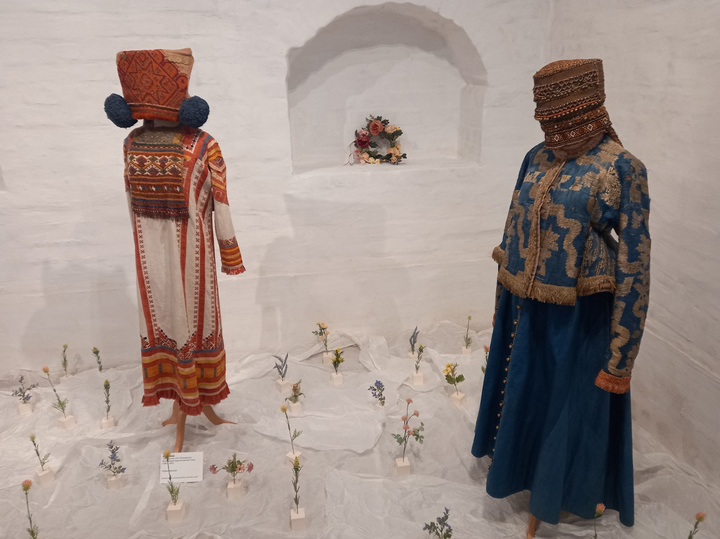In Moscow they showed a travel map of Ostrovsky and the artist who created the scenery for “The Snow Maiden”
[ad_1]
In the Stanislavsky House-Museum there is a pagan “temple”
The 200th anniversary of Alexander Ostrovsky changed the landscape of exhibition activities in 2023: museums associated with culture tried to offer their projects dedicated to the great playwright. So, in the House-Museum of K.S. Stanislavsky, a whole story with geography unfolded: an exhibition was brought here from Torzhok, telling about two travels – Ostrovsky himself along the Volga and the main artist of the play “The Snow Maiden” – across the Russian North. An MK correspondent got acquainted with the exhibits located under the arches of the mansion on Leontyevsky Lane.
Alexander Nikolaevich Ostrovsky, as you know, borrowed the plot of the play “The Snow Maiden” from Afanasyev’s collection “Poetic Views of the Slavs on Nature.” The power of Tsar Berendey revealed in this text is a fantasy on a Slavic theme, a location that makes no sense to look for on a map. But where the events of the play “The Thunderstorm” (and the second Volga play, “The Voevoda”) take place can be said with the maximum accuracy allowed in literary criticism. It is known that during a trip along the great Russian river from Tver to Nizhny Novgorod, carried out at the suggestion of the then Naval Ministry in 1856, Ostrovsky ended up in Torzhok. This town serves as a prototype for the city of Kalinov, where the Kabanov family drama unfolds and where “a ray of light in the dark kingdom” – Katerina – dies. This is the first journey, which is the subject of an exhibition at the Stanislavsky House Museum.
The second is chronologically tied to 1900. The Stanislavsky Theater is preparing to stage “The Snow Maiden” – and is sending the main artist of the play, Viktor Simov, on an expedition to the Russian North so that the scenery and attire showing the fictional country where the girl made of snow lives would not be “pulled out of thin air” in the ethnographic sense.

Thus, thanks to the exhibition “Theater of Life: A.N. Ostrovsky,” we learn that the kingdom shown more than a hundred years ago on the stage of Stanislavsky’s theater was “copied” from the Vologda and Arkhangelsk regions. And in order to reveal all the ins and outs of “The Snow Maiden,” costume sketches, notebooks with Simov’s handwritten notes, and director’s notes detailing the world of the play were brought into the light of day from the funds of the Moscow Art Theater Museum.
And they displayed a lot of things from the life of people of the past: cart wheels, ancient chests, hunting horns, tools, wooden “idols”. They even recreated a pagan “temple” with coal lying on artificial snow, the basis of which was a 17th-century idol brought by Simov from an ethnographic expedition. They also presented a great variety of girls’ jewelry in ethnic style, created especially for the performance by Stanislavsky’s associates: monistas, necklaces, braids, pendants made of shells, muffs, ribbons covered with patterns, wreaths…

Thanks to photographs from the beginning of the last century and, as they would say today, 3D models created by the artists of different scenes of the play, we see its historical version three-dimensionally, as in a stereoscope. Finally, archival costumes (about a dozen of them were exhibited) complete the creation of a complete picture of that same “Snow Maiden” by Stanislavsky-Simov.
And although there is complete silence on the ground floor of the great director’s house, broken by the whispers of visitors, it seems that voices are heard there and inaudible choral singing is heard…
[ad_2]
Source link






